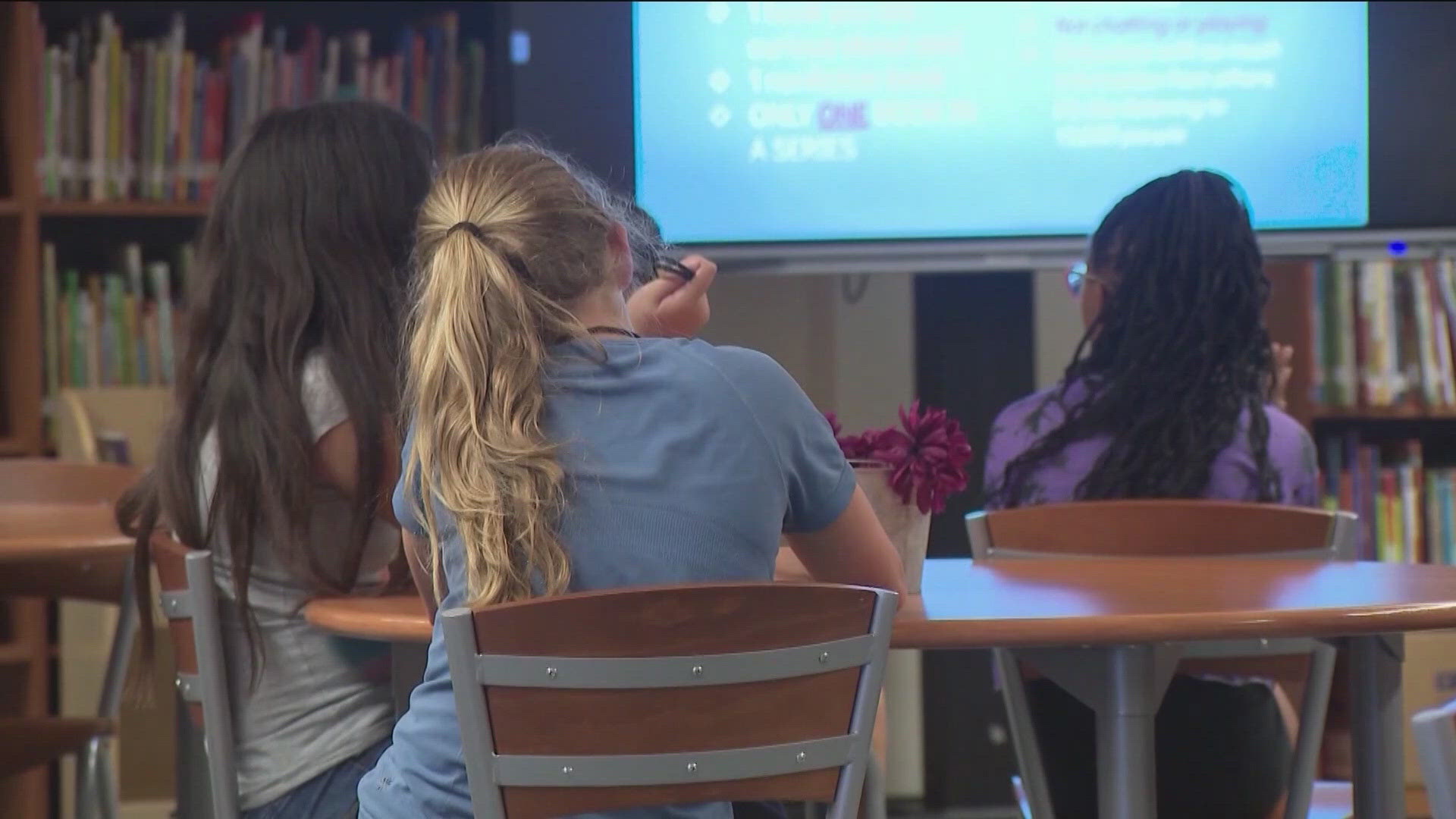AUSTIN, Texas — On Monday, Austin ISD's Board of Trustees voted to put a voter-approved tax rate election, or VATRE, on the November ballot. But if the thought of more taxes makes you mad, wait until you find out why the district needs the money.
In school districts across Texas, there's a math problem that just doesn't add up.
"It's not fair," said Missy Bender with the Texas School Coalition, a nonprofit working to make the math make sense.
The problem, she says, is recapture, a program that started 30 years ago and that is designed to fund Texas schools equally.
"The state was looking for money," she said.
Recapture says that if a district brings in too much property tax revenue, it is considered "property wealthy" and can't keep all the taxes it collects.
"The school district then has to, essentially, write a check to the state of Texas," Bender said.
That check replaces what the state would otherwise have to pay for education.
The list of so-called "property wealthy" districts has ballooned over the years to 349 districts – and they are paying a staggering amount.
"About $5 billion a year," Bender said.
In Central Texas, districts paying recapture include Round Rock, Eanes and Lake Travis ISDs, plus the biggest check writer of all: Austin ISD.
"I don't think anyone intended this property wealth system would become such a big portion of overall funding system," said Jacob Reach, Austin ISD's expert on recapture.
The district gave the state $900 million last year in recapture – three times more than any other district in the state. And yet –
"We're starting with a $119,000,000 deficit," Reach said.
Do the math, and Austin ISD should have a $781 million surplus. Instead, it has a choice: either cut staff and services or do what it did this week and ask voters for a property tax increase that would bring in more than $170 million.
The math here suggests Austin ISD would then have a $51 million surplus. But, again, the numbers don't add up.
"A majority of that would be recaptured through the system," Reach said.
Most of that money will not stay in Central Texas.
"About $130 million of it would go to the state," Reach said, adding, "I certainly understand that it is difficult, but it is the only mechanism that a school district has."
So taxpayers get to choose: pay more taxes or face more cuts at local schools.
When KVUE asked Bender if she could see how parents might be frustrated about the situation, she replied, "Absolutely. And I'm one of those [who are frustrated]."
Maybe there is a third option. Perhaps those who assigned this math problem can solve it. But Bender said voters have to speak up. She suggested they call their state representative and state senator.
"You do not have to be the expert on policy. Just tell the office how you feel about it," she said.
KVUE reached out to several local politicians about recapture. All but one either didn't return our calls or refused comment. State Rep. Donna Howard, however, said the Legislature worked hard last session to pass billions of dollars more for schools – but the governor refused to sign it, insisting the money be tied to school vouchers.
Now, more than $4 billion is simply sitting there and voters have to decide if they should increase their own taxes while the state pays less and less for education.
Not sure who your local representative is? Here's how you can find out. Once you find your district, you can find representatives' contact information here.

